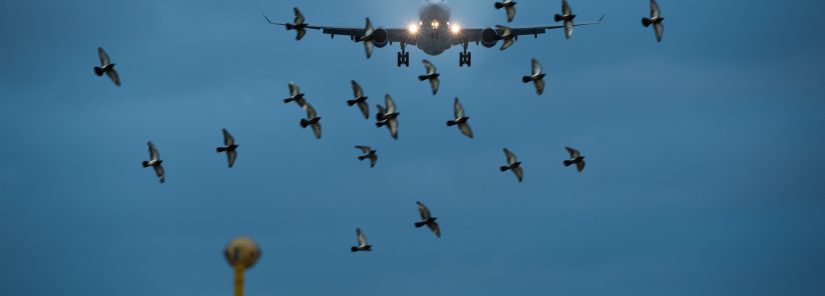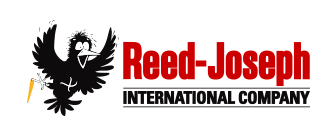
AIRPORT WILDLIFE MANAGEMENT PLANS ARE IMPORTANT!
Collisions between aircraft and wildlife cost the aviation industry billions of dollars per year worldwide and have caused the fatal loss of hundreds of passengers and crew. Many high-profile events have made international news, but the vast majority of strikes are never reported to the public despite occurring every single day of the year across the globe. Many people think these are random acts of nature which cannot be controlled. While there are a certain number of strikes that will inevitably occur, airport operators, pilots, traffic controllers, and others can significantly reduce the occurrence and severity of wildlife strikes to aircraft by implementing wildlife and operational management strategies that begin at the airport level.
The U.S. Federal Aviation Administration (FAA) and their counterparts in almost all other nations have recognized the importance of managing the risk wildlife pose to aviation. In the United States, it is mandatory for all certificated public airports to perform a Wildlife Hazard Assessment to determine the presence, abundance, and risk posed by birds and other wildlife in and around airports. The results of those studies are used to develop Wildlife Hazard Management Plans (WHMP) to actively manage risks posed by wildlife to aircraft operations. Every certificated airport in the United States now has an approved WHMP. In addition, all public airports that receive federal grants-in-aid, in any amount, are obligated to conduct an assessment and develop a WHMP as directed by the FAA. The importance of implementing these management plans cannot be overstated and even airports that are not federally mandated to develop them are strongly advised to do so. Having an integrated, functioning, and dynamic WHMP provides airports with a number of key safety provisions. First, the WHMP should be specifically tailored to the individual airport’s natural environment, operational tempo, and budgetary considerations. Second, a working WHMP directs specific actions to diminish the hazard posed by birds or other wildlife in the individual airport environment. Third, the WHMP can be monitored, adapted, and modified by federal, state, and local aviation authorities for compliance and efficacy. Fourth, a functioning WHMP provides the airport a high degree of legal liability protection in the event of an unfortunate wildlife strike. And last, the WHMP provides the traveling public, air carriers, contracted air services, general aviation operators, pilots, and aircrews a legitimate sense of security that the airports are doing their part to protect their lives and resources.
An airport Wildlife Hazard Management Plan is an integrated program that guides control strategies in a hierarchical structure and then implements communications protocols and administrative actions to advise, monitor, and modify procedures based on trending analysis. The basis of all airport wildlife programs begins with habitat management with the goal to create an environment that is as unattractive to wildlife as possible. It is recognized that it is impossible to completely “sterilize” the airport environment through habitat management alone, so various passive exclusionary measures such as robust fencing and anti-perching devices are built upon the baseline of habitat manipulation. Even these measures cannot completely prevent wildlife from entering the airport environment or operational airspace and, active dispersal is critical to employ as the next step in excluding wildlife from operations areas. In the extreme cases where all other methods require further reinforcement, and only as a last resort, lethal methods can be employed, with strict permitting requirements met, for individual birds or other wildlife that must be removed for significant safety reasons.
As a key component of any airport wildlife management program, and as detailed in their WHMP, every airport must have harassment and dispersal tools and methods on hand to deter birds and wildlife from entering the environment and encourage them to leave if they breach the facility. All airports, regardless of size, should have industry standard best management practices in place that include a variety of harassment tools to move birds and other wildlife out of operational areas. The most effective and commonly used method includes the judicious application of pyrotechnic devices, such as Bird Banger, Bird Banger EXP, Screamer Siren, ShellCracker, and CAPA cartridges. The appropriate launchers for these cartridges along with ear and eye protection are also necessary. LP gas cannon systems provide an extremely effective supplement to airport wildlife management programs and should be used judiciously to dissuade birds and wildlife from entering or occupying airfields. The Scare Wars® system is a fully automated array of radio-controlled LP gas cannons and bio acoustic sound generators that is available for full-time on-demand service. The system can be activated either from the centrally located master workstation or from any location on the airfield with a portable transmitter. Utilized by airport operations, air traffic control, wildlife management, or other personnel, the Scare Wars® system can be coordinated to ensure birds or other wildlife are safely dispersed while not interfering with air operations.
All of the above elements of a Wildlife Hazard Management Plan should be fully coordinated through communications systems with air traffic controllers, airport operations, and pilots to ensure advisories are issued and program elements are employed that reduce risk and allow un-disrupted aircraft operations. Administrative procedures are also necessary for records keeping, reporting of strikes, trending analysis, and ensuring compliance with federal, state, and local regulations and guidelines. While the full implementation of an integrated Wildlife Hazard Management Plan may seem cumbersome, in fact, it is merely an extension of the overall safety management system already employed by airports to ensure the safety of passengers and aircrews and reduce the likelihood of economic damages to equipment and cargo that are essential to the economy of nations. Every airport must have the equipment and procedures in place to achieve these objectives. A Wildlife Hazard Management Plan is essential for every airport, regardless of size, to document, monitor, and implement these critical safety programs.






